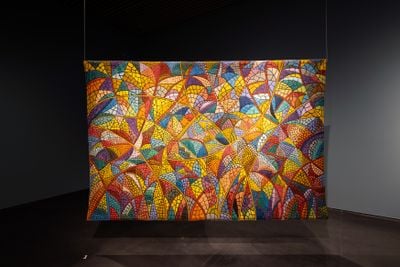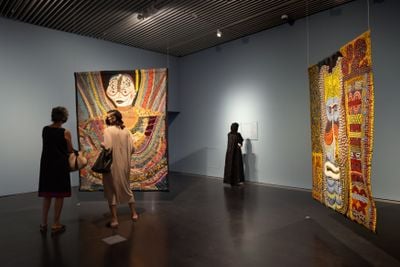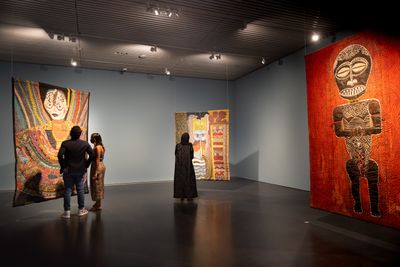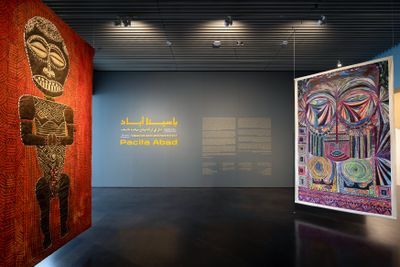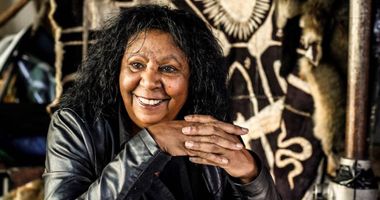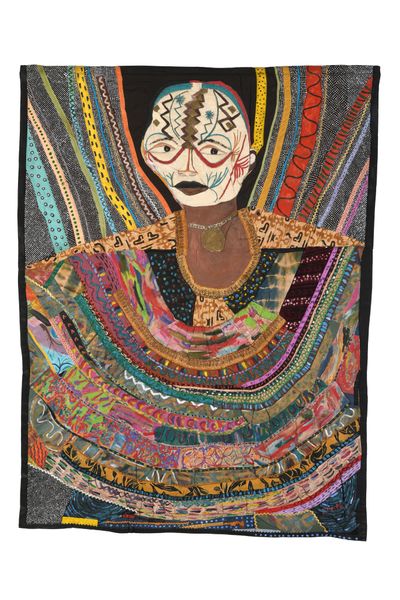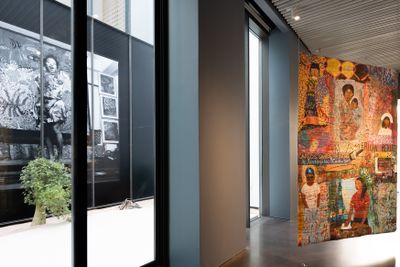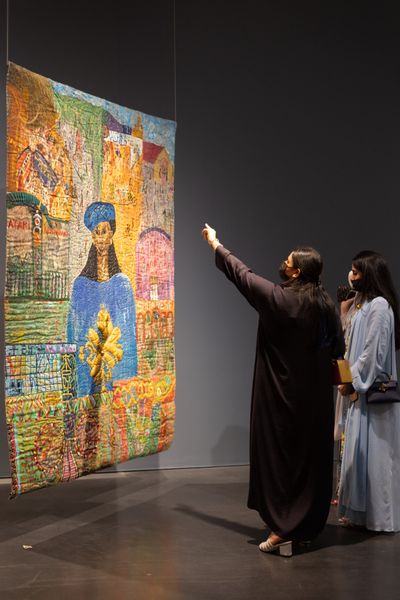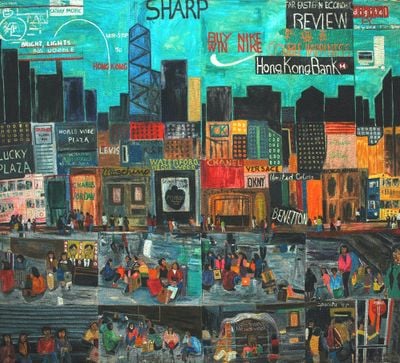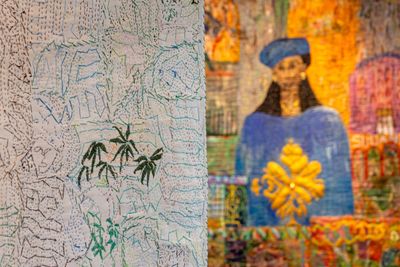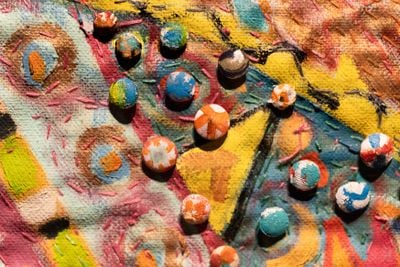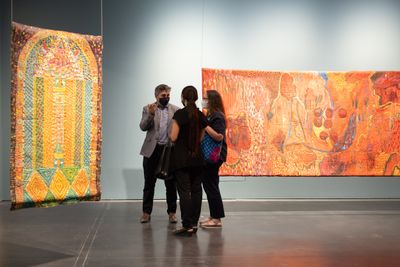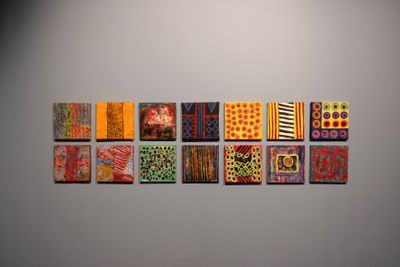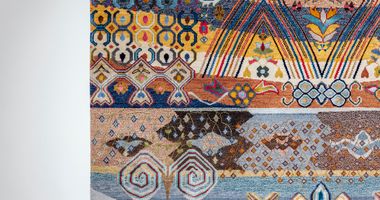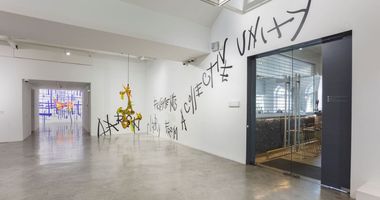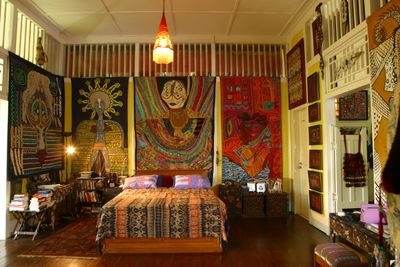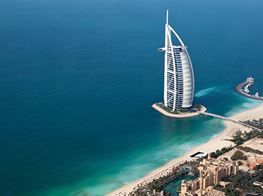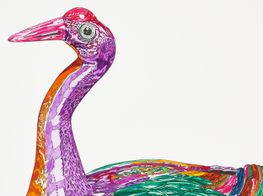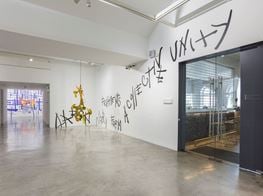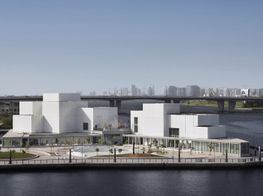Pacita Abad: World Citizen
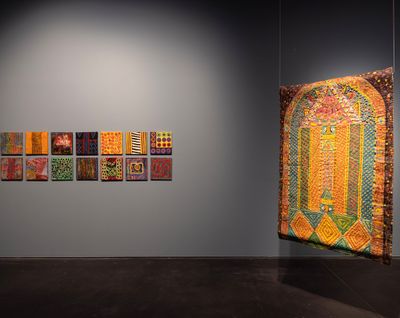
Left to right: Pacita Abad, Door to Life (1998–2004); Door Connects Me to the Greatest Happiness I Have Known (1999). Oil, painted cloth, buttons stitched on padded canvas. Exhibition view: Pacita Abad, I Thought the Streets Were Paved With Gold, Jameel Arts Centre, Dubai (13 September 2021–13 February 2022). Courtesy Jameel Arts Centre.
While Filipinos make up the fourth largest Asian nationality in the U.A.E.'s labour force after Indians, Pakistanis, and Bangladeshis, Filipino contributions to the U.A.E. art scene have mostly gone overlooked. Until now.
At the Jameel Arts Centre, located at Dubai's Jaddaf Waterfront, a new solo exhibition has opened featuring works by one of the Philippines' most prolific artists, Pacita Abad.
Titled I Thought the Streets Were Paved With Gold (13 September 2021–13 February 2022), this is the first solo show of a Filipino artist ever in Dubai, a city where 71.3 percent of its 3.31 million population are foreigners, or ajnabis as they are known in local Khaleeji Arabic, with Filipinos making up 21.3 percent, according to 2020 census data.
Curated in collaboration with the Pacita Abad Art Estate and London-based artist Pio Abad, Pacita's nephew, the show honours the late artist's magnificently diverse oeuvre that spanned continents and ranged from abstract forms to social realist depictions of everyday life in the U.S.A., the Philippines, and elsewhere.
Composed of 29 works, including 13 large-scale trapunto paintings and 16 small paintings from the 'door to life' series, the exhibition opens with a room dedicated to Abad's 'Masks and Spirits' series (1981–2000), which consists of several large works suspended from the ceiling.
Inspired by her encounters along the Congolese-Angolan border during a short but intense period of travel through Kenya, Sudan, Egypt, and the Congo in 1979, the series depicts images drawn from mythology and folklore.
Among them is Bacongo VIII (1988–1990), a tapestry of cowrie shells, plastic buttons, and mirrors on stitched silk screen and padded canvas inspired by traditional techniques of ceremonial Congo masks.
Born in Basco, Batanes, a small island north of Luzon, Abad developed a distinguished method of artmaking that built narratives around migration.
Abad travelled the world over her more than 30-year career, lived on six continents, and made work largely about the encounters she made along the way, becoming increasingly drawn to the textiles, masks, baskets, and beads that she came across, elements that would later prove central to her practice.
The artist's signature 'trapunto' paintings are named after a quilting technique that entails stitching and stuffing painted canvases to give them a three-dimensional sculptural look. With the stitching on their backs made visible when suspended, viewers can also observe their surfaces made up of materials including traditional cloth, mirrors, beads, shells, plastic buttons, and other objects.
Spread across four rooms, several large-scale pieces draw on Abad's wayfaring experience, defined by a dynamic of constant juxtapositions, which almost dance from their suspensions like suspended stories.
In You have to blend in, before you stand out (1995) a conflict of identities unfolds via a scene Abad witnessed of immigrants coming out of a store in Washington D.C.'s Adams Morgan district. Their figures protrude from the quilt as if born from the fabric itself, like sculptural reliefs. Among them is a young man wearing a sarong skirt, a Chicago Bulls basketball jersey, and a New York Yankees baseball cap.
From Doro Wat to sushi and chicken wings and tings (1991) depicts another intimate portrayal of immigrant life in the United States. In the middle of the scene is a woman that Abad befriended: an undocumented immigrant from West Africa named Hadiatou, who opened a small restaurant in Washington D.C.
These works exemplify Abad's attempts at charting the intensity, simplicity, beauty, and contradictions of the world she lived in and bore witness to: a humble traveller now remembered as a canonical chronicler, which links the materiality in Abad's work with the concept of alaala, the Tagalog word for memory.
In rendering her trapuntos as beautifully decorated, highly intricate travel journals, they become material protests against forgetting and manifestos in favour of drawing out the memories and knowledges that exist in the world.
Pacita's insatiable quest for uncovering latent cultural histories comes through in the series 'Door to Life', made in 1988. Abad spent three weeks in Yemen, where she studied the country's incredibly unique and beautiful architecture. There, she discovered Yemeni door and passageway architecture, which became a study for large-scale trapuntos, several of which are now on view in Dubai.
In these, she feverishly documents the Medieval mythology of the door in Arabic culture. In Door connects me to the greatest happiness I have known, made in 1999, we encounter a portal to the vernacular and folklore of a Yemeni door: diamond-shaped Islamic patterns made of painted cloth and buttons stitched on padded canvas awash in blues and reds.
Abad was undoubtedly a world citizen, and her legacy has resonated far beyond the place where she was born.
Yemeni architecture is characterised by breath-taking buildings and passageways, which had an important impact on Abad's oeuvre. Many of these centuries-old structures are uniquely adorned with entrance doorways that are stylised and highly decorative.
The city of Shibam is referred to as the 'Manhattan of the Desert' for its mud and stone houses, visible also in Zabid and the Old City of Sana'a, with some of these structures dating back to the 8th and 9th centuries, a period of renaissance in Islamic science and history.
What is particularly moving about Abad's trapuntos is her attention to detail with regards to the door and its symbolic relationship with moving and new horizons: a continuum between figuration and abstraction, which occupied a particular tension for artists of her generation.
As early as 1985 and up until her death, Pacita experimented with abstraction. In Life in the margins (2002), oil and painted cloth stitched on canvas compose abstract patterns and shapes that reveal an artist who seems at ease with the jarring necessity to create.
In her compositions, Abad implores viewers to look at the world as an expansive and energetic fabric of interconnections, something that feels especially relevant in Dubai today, with events like Expo 2020/2021 and the U.A.E.'s ambitions as a global city. The need for putting people over politics has never been more urgent.
Abad was undoubtedly a world citizen, and her legacy has resonated far beyond the place where she was born. In her life, she was recognised with 60 solo shows around the world before her death at the age of 58, and her work is now held in prestigious collections like Tate Modern, London; The National Museum of Women in the Arts, Washington D.C.; and M+ Museum, Hong Kong.
In 2004, the final year of her life, Abad painted the Alkaff Bridge in Singapore with 2,300 circles in 55 different colours: an idea that was born out of the artist's three-month residency at the Singapore Tyler Print Institute.
'I believe that art should be for everyone,' she said on completion of the project. 'While it has been nice to receive congratulations from government officials, businessmen and other artists, it has been much more rewarding to hear the "Painted Bridge" praised by taxi drivers, hospital workers, shopkeepers and especially the children.'
Far more interested in community than politics, Abad's exhibition in Dubai is a step in the right direction for a city that has, without a doubt, benefitted enormously from those who have called the sand metropolis place home.
As an artist, she drew on the experience of migration as a beautiful metaphor for life in dialogue with other cultures—lessons that should never be forgotten, nationalists be damned. —[O]


